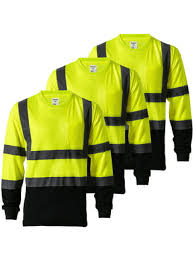Innovative Design of a Helmet Without a Peak for Enhanced Safety and Comfort
The Evolution and Importance of the Peakless Safety Helmet
In today's fast-paced industrial and construction environments, safety remains a paramount concern. Among the various safety equipment used, the helmet plays a critical role in protecting workers from potential head injuries. Recently, the peakless safety helmet has gained traction, offering unique advantages tailored for modern work environments.
What is a Peakless Safety Helmet?
As the name suggests, a peakless safety helmet lacks the prominent visor or peak often found on traditional helmets. This design choice is not merely aesthetic; it serves multiple functional purposes. The absence of a protruding peak allows for a better upward field of vision, making it especially beneficial for workers engaged in tasks requiring extensive vertical visibility, such as crane operators or those working in confined spaces.
Increased Comfort and Flexibility
One of the most significant advantages of peakless safety helmets is their comfort. Traditional helmets can sometimes feel bulky and restrictive, especially during prolonged use. The streamlined design of the peakless helmet reduces weight and enhances airflow, making it far more comfortable to wear throughout the day. This increased comfort translates into improved worker focus and productivity, as employees are less distracted by discomfort.
Moreover, peakless helmets often feature adjustable chin straps and sizing systems, ensuring a snug fit for users of varying head sizes. This customizability not only enhances the comfort but also ensures that the helmet remains in place, providing reliable protection without slipping or shifting.
Enhanced Safety Features
peakless safety helmet

While the peakless design enhances comfort and functionality, safety remains the top priority. Many peakless safety helmets come equipped with advanced safety features. For instance, some models incorporate high-impact polycarbonate shells that can withstand significant force, protecting the head from falling debris and accidental bumps. Additionally, certain helmets integrate features such as reflective strips for better visibility in low-light conditions, and options for attaching face shields or earmuffs, further enhancing their protective capabilities.
Versatility Across Industries
The peakless safety helmet caters to a broad range of industries. From construction to manufacturing, its applications are versatile. For instance, in construction sites where workers often look upward, the absence of a peak allows for improved sightlines and awareness of surroundings—critical in preventing accidents. In manufacturing settings, these helmets can be beneficial for employees working close to machinery, where a traditional peak might obstruct their view.
Similarly, in sectors like logistics and warehousing, where workers frequently maneuver in tight spaces, the peakless design minimizes the risk of snagging on equipment or overhead hazards, promoting a safer working environment.
Conclusion A Step Forward in Workplace Safety
The peakless safety helmet is more than just a simple variation of traditional head protection gear; it represents an evolution in safety design tailored to meet the complexities of modern work environments. Its combination of comfort, enhanced visibility, and versatility caters to a diverse range of industries, offering practical benefits that traditional helmets cannot replicate.
As we continue to prioritize worker safety, the rise in popularity of the peakless safety helmet is a promising trend. With its ability to adapt to the needs of various professions while providing reliable protection, it stands as an essential tool in our ongoing quest for a safer workplace. Investing in quality safety equipment, including peakless helmets, should be a priority for employers committed to the well-being of their workforce. In sum, as industries evolve, so must our safety practices, and peakless helmets are leading the way.
-
Top AI Safety Clothing with GPT-4 Turbo | Smart Protection
NewsJul.31,2025
-
Face Shield Safety Helmet with GPT-4 Turbo AI Safety
NewsJul.31,2025
-
CE Working Clothing for Construction & Welding Safety
NewsJul.30,2025
-
Premium Safety Helmet with Visor for Construction & Industrial Use
NewsJul.29,2025
-
High-Quality CE Working Clothing for Safety and Construction
NewsJul.29,2025
-
Premium Safety Helmet Hat with Ear Defenders, Brim & Soft Design
NewsJul.29,2025
